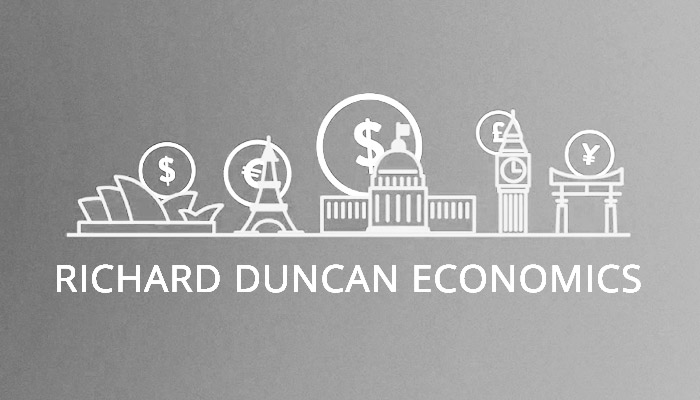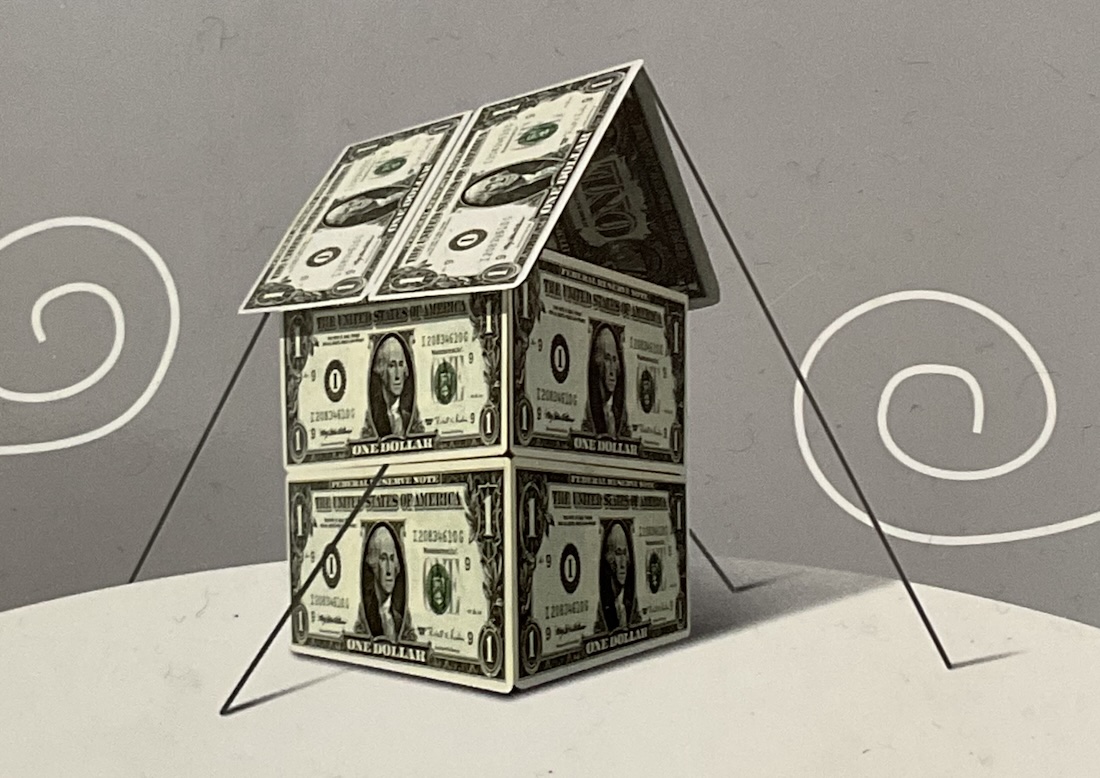BERNANKE’S CHOICE

Posted March 21, 2011
For twelve years the US trade deficit financed the US budget deficit and held down US interest rates. From 1996 to 2008, the US trade deficit exceeded the government’s budget deficit every year. The dollars sent abroad to pay for the trade deficit were accumulated by the central banks of the trade surplus countries, who then reinvested them in US government bonds. As discussed in earlier posts, those central banks bought up the dollars entering their economies in order to hold down the value of their currencies and so perpetuate their countries’ low-wage trade advantage and their export-led economic growth.
Although this process was extraordinarily damaging to the US economy over the long run as it destroyed the United States’ manufacturing sector, it had tremendous short term appeal for the US government since it financed its budget deficit at exceptionally low interest rates.
At its peak in 2006, the United States’ $800 billion trade deficit was so much larger than the government’s $160 billion budget deficit that it caused the Fed to lose control over interest rates and, therefore, over the economy as the surplus countries’ central banks were forced to buy up hundreds of billions of dollars worth of US government bonds that had been issued in earlier years, pushing up their price and driving down their yields. Low interest rates threw fuel onto the US property bubble and the Fed was absolutely powerless to do anything about it.
The situation is entirely different today. When the US property bubble popped and the global economic crisis began in 2008, the government’s budget deficit soared and the US trade deficit shrank. This year the budget deficit will be approximately $1.5 trillion, while the trade deficit will only be around $500 billion. The trade surplus countries (led by China) will print their own currencies and accumulate this half a trillion dollars as foreign exchange reserves and use it to buy up a third of the US budget deficit. However, that will still leave a trillion dollar funding shortfall in the US government’s finances.
That’s where Quantitative Easing comes in. By printing $600 billion and buying up $600 billion of government bonds between November 2010 (when QE 2 was launched) and June 2011 (when it is scheduled to end) the Fed is plugging that funding gap. However, if QE 2 ends on June 30th, there will once again be a yawning hole in the funding of the budget deficit.
QE 2 has boosted the economy in two ways. First, by acquiring $600 billion in government bonds, the Fed has financed the budget deficit at low interest rates. Second, QE 2 has forced the investors who would have bought those bonds to buy something else instead—something else like stocks! This explains why the stock market has risen 20% since QE 2 was announced in August. Higher stock prices have created a wealth effect that has financed a pick-up in consumer spending.
If the Fed stops printing money and buying government bonds (i.e. monetizing the government debt) at the end of June, then the money required to finance the $1.5 trillion budget deficit will have to come from somewhere else and the government will have to pay more for it. In other words, money would have to come out of stocks to fund the budget deficit and interest rates would rise. This would cause a significant drop in wealth as stock prices fell and it would negatively impact the entire economy as the cost of borrowing rose for everyone.
Now that the US trade deficit is no longer large enough to finance the massive government budget deficit, the Fed has had to step in to fill that role. If the Fed carries on with QE 3 in the second half of this year, it will be for that reason. Ending Quantitative Easing would sink the stock market, drive up interest rates and provoke a new economic slump. On the other hand, since printing money causes food price inflation, the continuation of Quantitative Easing would cause food prices to continue spiking globally, precipitate new waves of food riots in the Middle-East and around the world and exacerbate the geopolitical instability that soaring food prices have already caused.
That’s Bernanke’s choice. He must choose between recession in the United States or hunger in the developing world, where two billion people live on less than $2 per day. The odds are, he’ll choose hunger.


Hey Richard,
Excellent update on the US financial mess. It was really good to meet you on the Canada tour and I look forward to following your articles here.
Hello Mr. Duncan,
I would like to know what you think about an interview i heard fromf Jim Rickards on King World News and he was talking about Perpetual QE, and that the Fed could end QE on June but the roll over on their nearly $3 Trillion in securities that are maturing could keep QE going indefinitely. So my question is if they do “stop” QE on June what can we expect to happen?
Thank you for your time and articles.
to print or not to print, that is the question
😉
Richard, let me begin by saying that I am thrilled to see you posting your thoughts in (near) real-time as the events in the world unfold. Your blog is in my top list of places to go, alongside Mish, Calculated Risk, and Zero Hedge.
While I think that Bernanke’s choice is more of a Hobson’s choice, I’m curious why you believe that the trade surplus countries will continue to print their own currencies at the same rate? Beyond just the food prices, trade surplus countries such as China and Brazil are showing signs of gigantic real estate bubbles. (Brazil to a lesser degree since it is letting its currency appreciate significantly)
Good analysis, but does Bernanke really have a choice?
If he stops printing money, the economy might get into a depression that would be even more severe than that in the 1930s. And he would get all the blame for the economic woes and civil turmoil.
If he continues printing and in case inflation gets (even more) out of control, he could blame the speculators, other countries, politicians, etc.
The main question (from a personal investment point of view) is that whether he continues printing immediately after the expiry of QE2 at the end of June, or he lets the markets tumble somewhat (which would create a good buying opportunity) and then continues printing. And whether they would call it a different name; e.g. instead of quatitative easing, they would call it monetary support or use another euphemism to deceive the public. They are good at that.
Yeah, I don’t seem him having the US go into a recession. The developing world will suffer once more again.
After reading the Dollar Crisis 2nd Edition, I searched for your blog for current updates and I am glad I found it.
Will the Repulicans in the Congress limit Bernanke’s power to print money?
Richard, if you were Fed Chairman, what will you do?
Thanks for your great book and your current thoughts.
The U.S. plans $1.5 trillion budget deficit while the trade deficit will only be around $500 billion. Who is going to buy the rest of the budget deficit? The Fed will purchase about $400 bln. as part of the QE2 untill June and indicated today there will be no QE3. China and the rest of the world can buy up to $500 billion (up to the trade deficit), QE2 will purcahse $400 so someone should step up and buy the $600 bln left. The other option is the U.S. cuts the budget deficit by $600 bln and goes in deflation. The beard of Chairman Bernanke will stand up if he hears even remotely the deflation word. Is then the solution a bigger trade deficit – 1.1 trillion or the U.S. will still have a QE3 but under a different name?